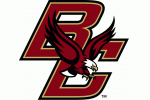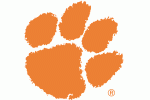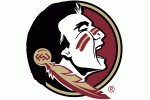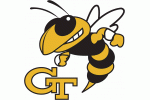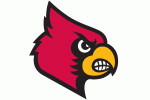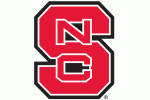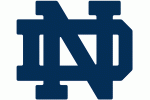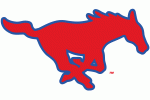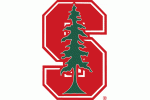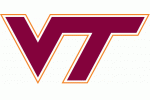If they have, is it working?

We have written a lot about offense and defense in the past two weeks, but have not really focused on special teams at all. Aside from a missed Mike Weaver extra point on the first touchdown of the year nothing has stuck out so far that would cause anybody to notice it, which is a good thing usually.
Through two games the special teams unit ranks 74th nationally according to S&P+, which, at a rating of 0.0 means Wake isn’t gaining or losing anything from the special teams.
Mike Weaver has continued to pull double duty on the kicking and the kickoffs, going 10-11 on extra points, and 3-3 on field goals. Dom Maggio has similarly maintained his starting punting role to a tune of 9 punts for 41.6 yards per kick (2 fair catches, 2 inside the 20, 44.4% FC/I20 rate).
The main focus of this article though is pointing out the fact that Weaver is no longer kicking touchbacks at the rate that he has the past two years. I have no idea if this is an intentional strategy or not, but let’s take a look at the stats over the past two years compared to this season:
2015 - 44 kickoffs, 62.9 Avg, 20 touchbacks, 45.5% touchback rate
2016 - 63 kickoffs, 64.2 Avg, 32 touchbacks, 50.8% touchback rate
2017 - 14 kickoffs, 60.3 Avg, 1 touchback, 7.1% touchback rate
Now, off the bat I will say that this is a limited sample size so far for 2017 since there have been only two games played. That being said, it is a pretty jarring difference from the past two seasons compared to this season.
It’s unlikely that Weaver is losing leg strength, so I have to wonder if this is a new strategy the staff intends to use this season?
The average touchback percentage across college football sits at a healthy 38%, so Mike Weaver has exceeded the national average for touchbacks by a good amount the past two seasons.
While touchback percentage is certainly a reasonable way to look at how “successful” a kickoff is, a lot of teams (notably Florida State and Ohio State) realized that they could actually kick the ball right to the goal line, forcing the opposing team to return the ball, while the kicking team’s athletes got down there to tackle the returner before he reaches the 25 yard line.
There is some inherent risk involved in this since a successful touchback prevents a touchdown 100% of the time, but these teams have been very good at limiting their opponents from getting the ball to the 25, creating an advantage on their kickoffs.
A better way to judge whether or not a kickoff is successful or not is to examine the percentage of kicks that net 40 or more yards for the kicking team. See the explanation from Bill Connelly below:
Really, though, what happens after about 30 yards is pretty random, just as big plays are to some degree random on offense and defense. Your goal as a return unit is to get your man to about the 30 or 40, then hope he's able to find an angle that allows him to go much further; your goal as a kick coverage unit is to hem the guy in before he gets to that point.
So what happens if we eliminate onside kicks and judge a kickoff or return unit by simply how frequently returns were hemmed in at a certain baseline?
On average, kickoffs netted about 40-41 yards per kick in 2015. Since touchbacks net 40 yards, the median falls in the same range, too. So what if we simply deemed kickoffs that net 40 yards or more a success? And what if we deem returns that create net yards of 39 or fewer yards successes in the opposite direction?
Judging kicks in this rather simple way changes how we view kick coverage in general. A healthy 38% of kickoffs are touchbacks on average, and if you're really good at booting the ball through the end zone, you don't have to really worry about how good your coverage unit is -- you're producing good field position regardless, and that's the primary goal here.
One of the primary reasons that I point this out is that changing the strategy for kickoffs would be somewhat odd given the success that the Deacs had on kickoffs last season.
In 2016 Wake ranked 23rd in the country in kickoff success rate at 82.5%. Out of the 63 total kickoffs last season, Weaver had 32 touchbacks that automatically started at the 25 yard line, and two others that were fair caught. The other 29 kickoffs went for an average of 23.83 yards per return, which at face value does not show that the coverage team did that well, until you consider that 2-3 large returns throughout the course of a season can lead to a pretty skewed number. This is especially true since realistically you can only be tackled so far behind the 25 yard line to balance it out.
The percentage that a team can stop an opponent short of the 25 yard line correlates strongly with opponent starting field position throughout the course of the game, which has been a huge part of the Demon Deacons gameplan the past few years.
Did the ability of the kickoff coverage team last season and in spring football show enough promise that the coaching staff considered doing more of it this year to try to provide an edge? Even to the extent that they instructed Weaver to kick it short of the end zone?
Perhaps that is the case, so let’s look at what Wake Forest has done so far this season.
Bill Connelly only includes FBS vs. FBS teams in his S&P rankings, so the 42.9% kickoff success rate for 2017 only takes into account the 7 kickoffs against Boston College, 4 of which got returned past the 25 yard line (one was kicked out of bounds).
If you include the Presbyterian game in the data, then it adds an additional 9 kickoffs (one was a touchback), of which 7 were stopped before the 25 yard line, and the one return that got past the 25 yard line was actually kicked by backup placekicker Ben Brown.
That brings the total number of kickoff returns so far this season to 14 overall, 10 of which were stopped before the 25 yard line, for a success rate of 72%.
Looking at Weaver’s numbers alone, he has kicked off 14 times this season, 12 of which have been returned. Of those 12 returns, 9 of them have been stopped short of the 25 yard line for a success rate of 75%.
Another thing to consider is that the average per return for opponents this season is 21.38 yards, which means Wake is doing a better job of covering the kicks than last year, albeit against lesser competition.
I cannot stress enough that this data is still a very small sample size. At this point I do not know if this is a strategy that the coaching staff is looking in to, or if Weaver just had a strange first two games.
If Coach Clawson and the staff continue to get Weaver to do this then it will be interesting to see how the kickoff success rate compares to last year. It also provides more chances for opponents to spring a big kickoff return, so if the game situation calls for a touchback will the staff instruct Weaver to go ahead and power it through the end zone?
Yet another alternative suggestion thus far is that the coaching staff wanted to get some live kickoff coverage “practice” (if you will) in during games to help prepare for later in the season when a touchback is not achieved. This may have made sense against Presbyterian, but certainly not in the first half against Boston College when the game was still in question.
In conclusion, I do not know if the staff is actively telling Weaver to not kick touchbacks, but it would be rather strange to have a decrease in leg power to this extent from what he produced last season.
Not kicking touchbacks is a strategy that has worked very well for teams with freakishly athletic and fast guys on the kickoff coverage team, but can it work for Wake?
More data points may be needed before it is determined whether or not this (possible) strategy is successful.
It is something that I will be paying close attention to this week to see how it develops as the Deacs get into the meat of the schedule.


